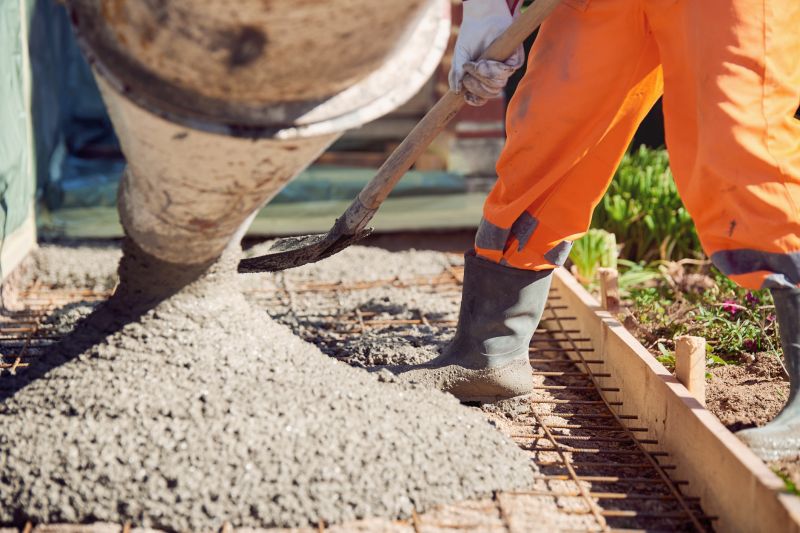Top-Rated Products For Concrete Installations To Boost Efficiency
Identify high-performance tools and supplies that help accelerate your concrete installation process without sacrificing quality.
 Concrete installations are a fundamental aspect of construction and landscaping projects, providing durable surfaces for driveways, walkways, patios, and foundations. Selecting the right products for concrete installation can significantly influence the longevity, safety, and aesthetic appeal of the finished project. Whether you are a professional contractor or a DIY enthusiast, understanding the variety of available products helps ensure successful outcomes. From mixing and curing to finishing and reinforcement, each component plays a vital role in achieving a high-quality concrete surface.
Concrete installations are a fundamental aspect of construction and landscaping projects, providing durable surfaces for driveways, walkways, patios, and foundations. Selecting the right products for concrete installation can significantly influence the longevity, safety, and aesthetic appeal of the finished project. Whether you are a professional contractor or a DIY enthusiast, understanding the variety of available products helps ensure successful outcomes. From mixing and curing to finishing and reinforcement, each component plays a vital role in achieving a high-quality concrete surface.
Top Overall Option
Concrete Adhesive and Bonding Agent
A versatile concrete adhesive and bonding agent can be essential for ensuring strong, durable joints between new and existing concrete surfaces. It is suitable for patching, repairs, and bonding overlays, providing reliable adhesion in various conditions. Proper use of this product can help maintain structural integrity and extend the lifespan of concrete installations.
Types of Products For Concrete Installations
Concrete Mixes
Pre-mixed or custom-blended concrete mixes designed for specific projects, offering different strengths and setting times.
Reinforcing Mesh and Rebar
Steel mesh and rebar used to strengthen concrete structures and prevent cracking under load.
Form Liners and Molds
Forms and molds that shape and support concrete during pouring, available in various designs and materials.
Surface Sealers
Products applied to finished concrete surfaces to protect against stains, wear, and water penetration.
Curing Compounds
Chemicals that retain moisture in the concrete to promote proper curing and strength development.
Concrete Edging Tools
Tools designed to create clean, defined edges along concrete slabs and pathways.
Vibration and Compaction Equipment
Vibrators and compactors that eliminate air pockets and ensure uniform density in poured concrete.
Joint Fillers and Sealants
Materials used to fill expansion and control joints, accommodating concrete movement.
Surface Finishing Tools
Floats, trowels, and brushes used to achieve desired surface textures and smoothness.
Concrete Repair Products
Patch compounds, crack fillers, and overlays designed to restore damaged or aged concrete surfaces.
Anti-slip Additives
Materials added to surface coatings to improve traction and safety on concrete surfaces.
Waterproofing Membranes
Layers applied to concrete to prevent water ingress and protect against moisture-related damage.
Decorative Concrete Products
Stains, dyes, and stamping mats to enhance the aesthetic appeal of concrete surfaces.
Bonding Agents
Adhesives that improve the bond between old and new concrete layers or overlays.
Concrete Densifiers
Chemical treatments that harden the surface of poured concrete, increasing durability.
Expansion Joints
Pre-formed joints that allow for movement and thermal expansion in concrete slabs.
Concrete Saw and Cutting Equipment
Tools used to cut and shape concrete for precise installation and modifications.
Popular Choices
A variety of mixes tailored for different load capacities and finishing requirements.
Widely used for strengthening slabs and foundations.
Commonly applied to protect and enhance finished concrete surfaces.
Popular for ensuring proper curing and minimizing cracking.
Essential for managing movement in large slabs.
Frequently used to restore damaged areas.
Increasingly chosen for safety on walkways and stairs.
Commonly selected for below-grade and outdoor applications.
Popular for aesthetic enhancement of concrete surfaces.
Often used in overlay and repair projects.
Widely used to achieve smooth finishes.
Chosen for decorative or textured concrete surfaces.
Commonly used for quick repairs and maintenance.
Frequently applied to outdoor and basement concrete.
Popular for increasing surface hardness and durability.
Used to create slip-resistant textures.
Commonly selected for sealing expansion and control joints.
Essential for precise cuts and modifications.
Proper preparation is essential before any concrete work begins. This includes selecting appropriate forms, reinforcement materials, and surface treatments. For setting and leveling concrete, tools such as screeds and floats are commonly used to achieve a smooth, even surface. To reinforce concrete structures, various types of rebar and mesh are available, each suited for different load requirements and project sizes. Finishing products, like sealers and curing compounds, help protect the concrete during the critical curing phase and extend its lifespan.
In addition to basic tools and materials, there are specialized products designed to address specific challenges such as cracking, surface wear, and weather resistance. The right selection of these products can improve the durability and appearance of concrete installations over time. It is also important to consider the compatibility of products with existing materials and the specific conditions of your project site. Proper application and adherence to manufacturer instructions are key to maximizing the effectiveness of each product used in concrete installations.
Key Buying Considerations
- Determine the specific application and select products designed for that purpose.
- Consider the load-bearing requirements of the project to choose appropriate reinforcement and mixes.
- Evaluate the environmental conditions, such as exposure to water, chemicals, or temperature variations.
- Check compatibility of products with existing materials and surfaces.
- Review curing and finishing requirements to ensure proper surface quality.
- Assess the ease of application and required tools or equipment.
- Look for products with clear instructions and manufacturer support.
- Consider the longevity and maintenance needs of the chosen products.
- Identify if decorative features are desired and select suitable aesthetic products.
- Prioritize safety features, such as anti-slip additives or non-toxic sealers.
- Estimate the project budget and compare product costs accordingly.
- Ensure availability of replacement or supplementary products for future repairs.
- Verify the drying and curing times to plan project timelines effectively.
- Choose trusted brands or suppliers with good reviews and reliable supply chains.
- Consider environmental and health safety guidelines during application.
